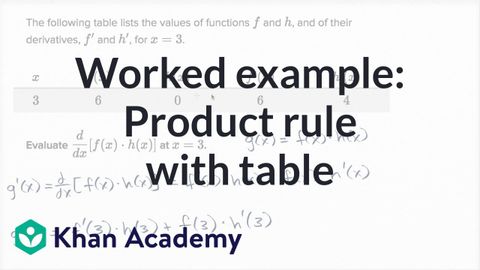
Subtitles & vocabulary
Worked example: Product rule with table | Derivative rules | AP Calculus AB | Khan Academy
00
yukang920108 posted on 2022/07/12Save
Video vocabulary
essentially
US /ɪˈsenʃəli/
・
UK /ɪˈsenʃəli/
- Adverb
- Basically; (said when stating the basic facts)
- Used to emphasize the basic truth or fact of a situation.
A2
More expression
US /ɪkˈsprɛʃən/
・
UK /ɪk'spreʃn/
- Noun (Countable/Uncountable)
- Act of making your thoughts and feelings known
- Group of words that have a specific meaning
A2TOEIC
More term
US /tɚm/
・
UK /tɜ:m/
- Noun (Countable/Uncountable)
- Conditions applying to an agreement, contract
- Length of time something is expected to happen
- Transitive Verb
- To call; give a name to
A1TOEIC
More imagine
US /ɪˈmædʒɪn/
・
UK /ɪ'mædʒɪn/
- Verb (Transitive/Intransitive)
- To think creatively about; form mental picture of
- To suppose or assume something.
A1TOEIC
More Use Energy
Unlock All Vocabulary
Unlock pronunciation, explanations, and filters
